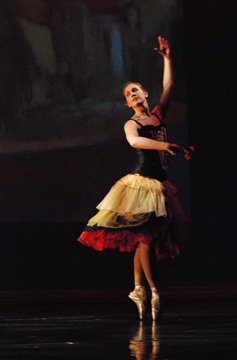 |
| The ballet shoes of a dancer en pointe. (Photo credit: Wikipedia) |
A dancer is an artist, and therefore concerned about the visual. They are concerned, believe it or not, about the appearance of their feet. Their feet need to appear elegant, graceful and smooth, which is accomplished by their footwear. At the same time a dancer is also considering the safety and care of their feet. No one feels the pain more than the dancer if good decisions are not made.
The most common error in judgment is in the correct fit. The tendency is for parents to purchase shoes that are too big for the beginning dancer. The shoes will not be usable for multiple seasons. You need to plan on a pair of shoes each season, but luckily, they are reasonably affordable. Occasionally an instructor will insist on a particular brand or style of shoes, but more often you are on your own.
For the new dancer full leather, suede sole slipper is recommended for both children and adults. It allows for muscle and strength development and should be no longer than one half inch beyond the longest toe, not considering the big toe. You also need to consider the following:
- Materials available are leather, canvas or both. Leather is recommended.
- Correct size for length and width for a snug and secure fit. Stand up on your toes and your toes should not feel crammed in the front of the shoe. You should be able to move your toes.
- Never purchase online unless you have tried on that brand in the store and are sure of the fit.
- New dancers should purchase shoes with the elastics pre-sewn.
If you have concerns or questions about dance shoes that are fit, consult Dr. Boucher by calling (203) 238-3668. She is experienced and knowledgeable about dance and always has foot safety and health in mind.
References:
http://suite101.com/article/how-to-choose-a-ballet-slipper-a34999
http://dance.about.com/od/dancegear/tp/Find_Ballet_Shoes.htm












